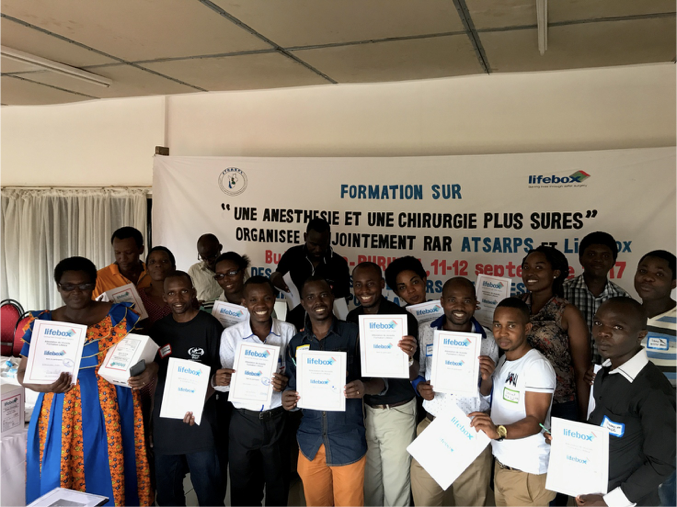
Lifebox Impact in Burundi
Lifebox impact in Burundi highlighted in new study in the South African Journal of Anaesthesia and Analgesia - with 89% per cent of hospitals having a Lifebox pulse oximeter.
“Our study also highlights Lifebox’s impact in Burundi, with respondents from 89% of hospitals reporting the use of Lifebox pulse oximeters. Since September 2017, there have been three Lifebox workshops held in Burundi, and 116 pulse oximeters distributed. These workshops included training on maintenance and proper usage of the Lifebox pulse oximeter and how to recognise and treat hypoxia, as well as implementation of the WHO surgical safety checklist.1”
Burundi, a small east African country, has the lowest surgeon density in east, central and southern Africa with 0.18 surgeons per 100 000 people. There are currently just six physician anesthesia providers working in the country (0.05 per 100 000 population) and 328 non-physician anesthesia providers (2.78 per 100 000 population) – lower than any of its east African neighbours.
Since 2017, Lifebox has partnered with the national association of anesthesia providers in Burundi, – Agora des Techniciens Supérieurs Anesthésistes Réanimateurs pour la Promotion de la Santé (ATSARPS) – to improve the safety of anesthesia.
“This study highlights the significant impact that Lifebox has had across the entire country of Burundi in improving the safety of surgery and anesthesia care. While we found significant gaps in many pieces of anesthesia equipment that are recommended by the World Health Organization, we found that 89% of hospitals in Burundi which were surveyed were using Lifebox pulse oximeters.”
Dr. Gregory Sund, Anesthesiologist, Kijabe Hospital, Kenya and an author of the study.
The study, ‘Anaesthesia facility evaluation: a Whatsapp survey of hospitals in Burundi’ reported on the use of WhatsApp to perform a facility evaluation of available anesthesia equipment across Burundi. The study focused on five pieces of anesthesia equipment recommended by the World Health Organization – World Federation of Societies of Anesthesiologists (WHO–WFSA) International Standards for a Safe Practice of Anesthesia.

The study found that 89% of hospitals had a Lifebox pulse oximeter, 91% had an anesthesia machine, 16% had capnography, 24% had an ECG and 14% had a defibrillator. While 91% of respondents in Burundi reported the presence of an anesthesia machine, 52% reported that their machines were either not functional or only partially functional – highlighting the critical role of pulse oximetry in providing essential patient monitoring during anesthesia.
The widespread impact of Lifebox’s work in Burundi is testament to our partnership model – working with in-country partners for safer surgery and anesthesia. Lifebox plans to build on the successes in Burundi to date, with 200 more pulse oximeters, to help further close the oximetry gap in Burundi.
1 Southern African Journal of Anaesthesia and Analgesia. 2021;27(2):70-75 https://doi.org/10.36303/SAJAA.2021.27.2.2456

